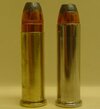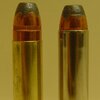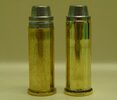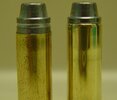Typetwelve
Member
- Joined
- Mar 1, 2019
- Messages
- 644
With pretty much any straight wall round that I load (38 spcl, 44 magnum, 460 S&W, projectile doesn't matter, they all do it the same way), I've noted that when I seat to the proper depth (and verify that with a mic), after crimping, it will "squeeze" (for lack of better terms) the projectile back out a bit. Typically a min of +.005", upwards of +.010 OAL". If I then place it back in the seating die, it will seat it back properly (without effecting the crimp). I run Dillon and Hornady dies for these rounds, doing seating on one die, crimping on another. This happens on both my Dillon 550 and RCBS single stage.
has anyone else noted this?
has anyone else noted this?





